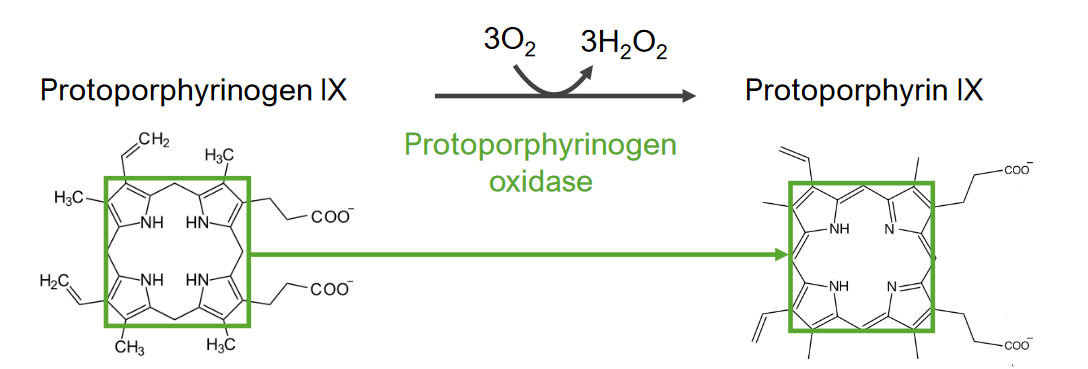Playlist
Show Playlist
Hide Playlist
Heme: Introduction
-
Slides HemeSynthesis,IronTransport,Storage.pdf
-
Reference List Biochemistry.pdf
-
Download Lecture Overview
00:02 In another set of these lectures, I've talked about the importance of heme for carrying oxygen within hemoglobin. 00:08 In these set of lectures, I'll talk about how that heme is made and how the iron in the heme is transported and stored in the body. 00:17 Now, heme is as you've seen in the other lectures, a flat, planar structure that contains a porphyrin ring with an atom of iron at its very center. 00:26 The ring structures that hold the iron can serve as a sink for electrons and this can be valuable also for the process of electron transport. 00:35 The ring also enables the carrying of oxygen which is what happens inside of hemoglobin. 00:40 So, hemes are usually found attached to proteins. 00:43 That's true whether they're in the electron transport system or they're contain within a hemoglobin or myoglobin. 00:49 The examples, of course, include these proteins: hemoglobin, myoglobin and the cytochromes of the electron transport system. 00:56 The names of the cytochromes in the electron transport system come from the hemes that they contain. 01:01 Cytochrome a, for example contains heme a. 01:05 The ring structure that's found in the hemes of hemoglobin, myoglobin and cytochromes is also found in the chlorophyll. 01:13 And in the chlorophyll, the ion is replaced with the magnesium at its center. 01:17 The cobalamins, also known as vitamin B12, have a cobalt at their center instead and we can see that here. 01:24 Now, the structure and function of hemes is related to their planar structure. 01:28 And we can see that the various hemes have a very similar central structure as we see in Heme A, Heme B , Heme C and Heme O. 01:37 And we see that the primary differences of these different forms of heme are due to alterations on the outer part of the molecule. 01:43 These have little effect on the function of each of the individual hemes. 01:48 Heme A is found as part of the complex IV of the electron transport system and it’s the part where oxygen is reduced. 01:56 Heme B is the most common type that we see and it's found in hemoglobin, myoglobin, peroxidase enzymes and cycloxygenase enzymes for making prostiglandins. 02:05 Other proteins that contain heme B include the P450 hydroxylation system of the liver and the nitric oxide synthase system that we've talked about in other lectures. 02:15 Now heme C is found as the name would suggest in cytochromes C, a very important protein in the electron transport system. 02:22 And it links to the protein via cysteines, the sulfur side chains. 02:27 Heme O functions in bacterial oxygen reduction very much like the heme A does where the complex IV reduces oxygen.
About the Lecture
The lecture Heme: Introduction by Kevin Ahern, PhD is from the course Amino Acid Metabolism.
Included Quiz Questions
Which of the following is true regarding heme?
- It is usually attached to a protein.
- It has a molecule of Fe+++ at its center.
- It is found in chlorophyll with cobalt at its center.
- It is a non-planar structure.
Which of the following is true regarding the different types of heme? Select all that apply.
- Heme B is the most common type of heme.
- The primary differences in the different types of heme are due to alterations in the inner part of the molecule.
- Heme A is involved in electron transport.
- Heme O functions in bacterial oxygen reduction.
- Heme B is in hemoglobin, myoglobin, and P450 protein.
Customer reviews
5,0 of 5 stars
| 5 Stars |
|
5 |
| 4 Stars |
|
0 |
| 3 Stars |
|
0 |
| 2 Stars |
|
0 |
| 1 Star |
|
0 |




